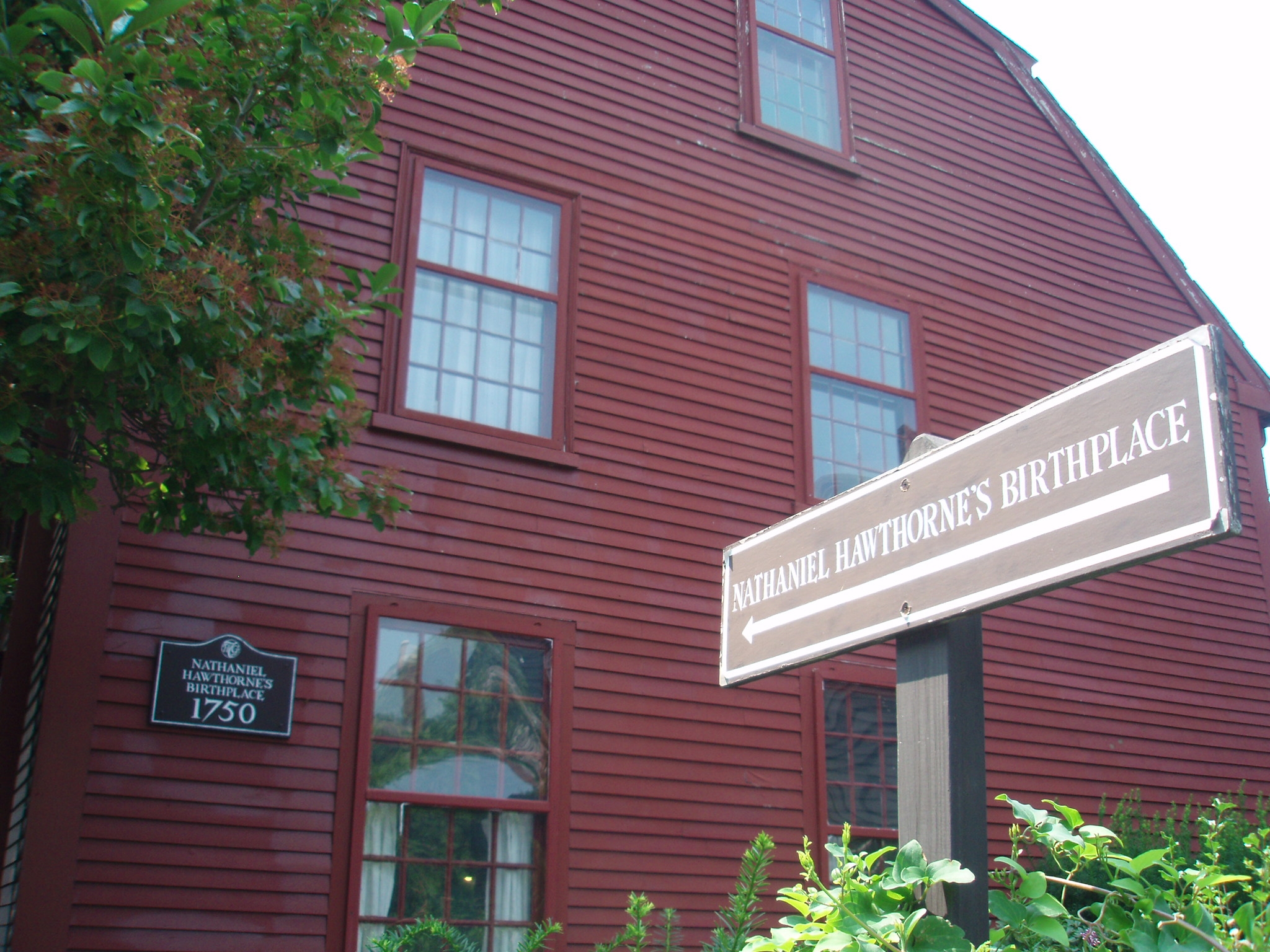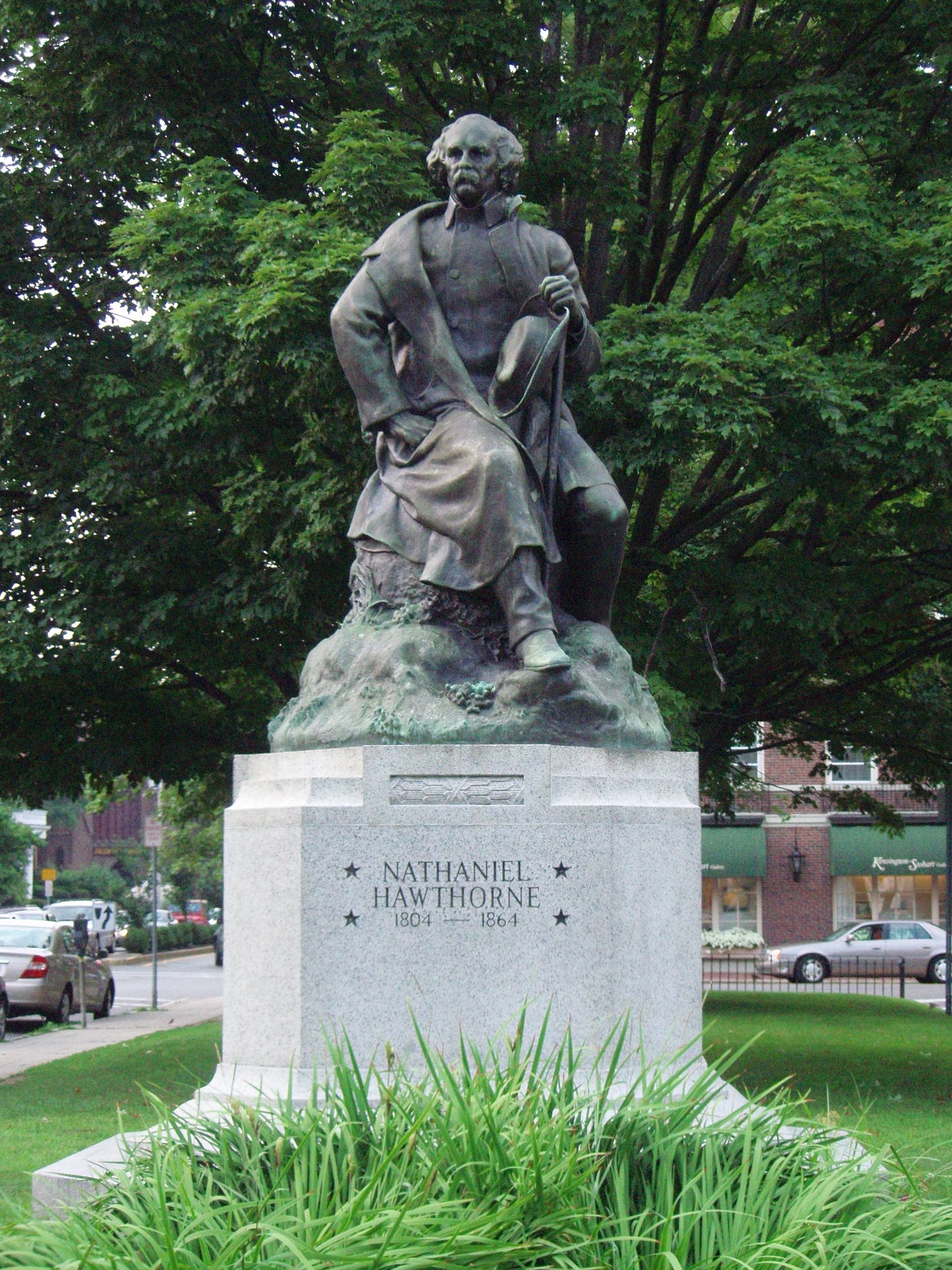
American
Romanticism
Student-led Text-Objective Discussion 2008
Thursday 9 October: Nathaniel Hawthorne, N 589-592, 605-622 (“Young Goodman Brown,” “May-Pole of Merry Mount,” & “Minister’s Black Veil”)
text-objective discussion leader ("May-Pole" and/or "Black Veil"): Amy Sidle
Amy's vacation pictures . . .
Nathaniel Hawthorne
(1804-1864)
(Source: Norton 589-592; www.online-literature.com)
Nathaniel Hawthorne was described as “the most significant fiction writer of the antebellum period.” Hawthorne was born on July 4, 1804, in Salem, Massachusetts. His prominent Puritan ancestors on the Hawthorne side of the family were among the first settlers of Massachusetts and included a judge in the Salem witchcraft trials of 1692. As a child, an injured foot kept him home from school for a long recuperation period; he came to read extensively.
Hawthorne was friends with and neighbor for a time to some of New England’s finest intellectuals including Amos Bronson Alcott and his daughter Louisa May Alcott, Henry David Thoreau, and Ralph Waldo Emerson, as well as a classmate from Bowdoin College in Brunswick, Maine, Henry Wadsworth Longfellow.
Hawthorne became one of the leading writers of his time, moving away from formalism and exploring the ideas of individual responsibility, the importance of creative expression and man’s relationship to the natural world. He also at times delves into the mysterious and disturbing, even using the Salem Witch trials as a theme of many of his writings including the Gothic romance The House of Seven Gables (1851).
In Boston on July 9, 1842, Hawthorne married painter and fellow transcendentalist Sophia Peabody with whom he would have three children; daughters Una and Rose, and future author son Julian Hawthorne. Also in 1851 Herman Melville dedicated Moby Dick to Hawthorne. In 1852 Hawthorne bought his home ‘The Wayside’ where the Alcotts had once lived. In 1853, the Hawthorne family set sail for Liverpool, England where Nathaniel served as U.S. Consul. They traveled throughout Europe and lived for a time in France and Italy where they met fellow authors Elizabeth Barrett Browning and her husband Robert Browning.
Nathaniel Hawthorne died on May 19, 1864. Hawthorne lies buried on Author’s Ridge in the Sleepy Hollow Cemetery in Concord, Massachusetts among his many friends including the Alcotts, Emerson, and Thoreau.
______________________________________________________________________________
Relevant Objectives
Objective 1a:
To identify and criticize ideas or attitudes associated with Romanticism, such as desire and loss, rebellion, nostalgia, idealism, the gothic, the sublime, the individual in nature or separate from the masses.
Romance narrative: A desire for anything besides “the here and now” or “reality," the Romantic impulse, quest, or journey involves crossing physical borders or transgressing social or psychological boundaries in order to attain or regain some transcendent goal or dream.
Objective 2a:
To identify the Romantic era in the United States of America as the “American Renaissance”—roughly the generation before the Civil War (c. 1820-1860, one generation after the Romantic era in Europe).
Objective 2e:
American Romanticism exposes competing or complementary dimensions of the American identity: is America a culture of sensory and material gratification or moral, spiritual, idealistic mission?
“The Minister’s Black Veil”
Questions:
1. In regards to Objective 2e, why do you think it is so difficult for the parishioners to accept the minister’s black veil? Is it due to their “sensory and material gratification”?
1a. Why does the minister insist that he don the veil at all times, even while alone? Is it part of his “moral, spiritual, idealistic mission”?
2. Discuss the dark diction that Hawthorne associates with the veil. How does this dismal language affect the text? The reader? The Gothic?
3. Discuss the Gothic elements of the piece. Could the sheer mystery that surrounds the veil be considered Gothic as well?
______________________________________________________________________________
“The May-Pole of Merry Mount”
Questions:
1. What are the Gothic elements in this piece?
2. Despite Hawthorne being a descendent of Puritans, why do you think he uses a Puritan point of view? What effect does it have?
3. What aspects of the second portion of Objective 1a listed above exist in this piece?


